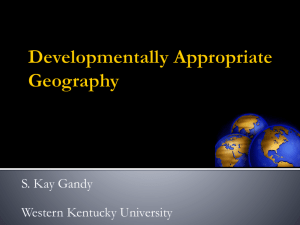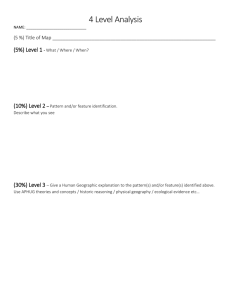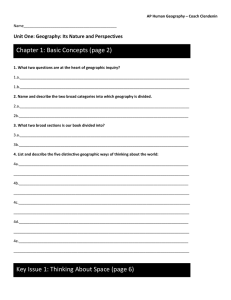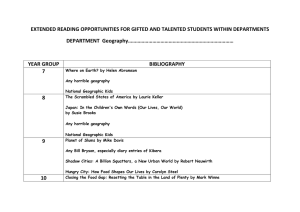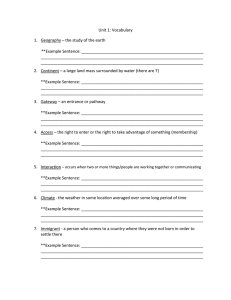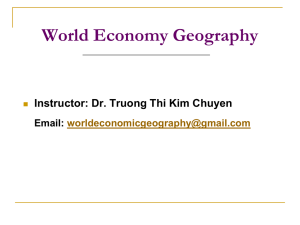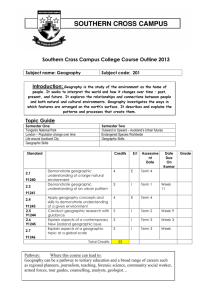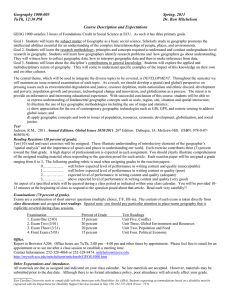Grades 5-8-World Geography Curriculum Overview
advertisement
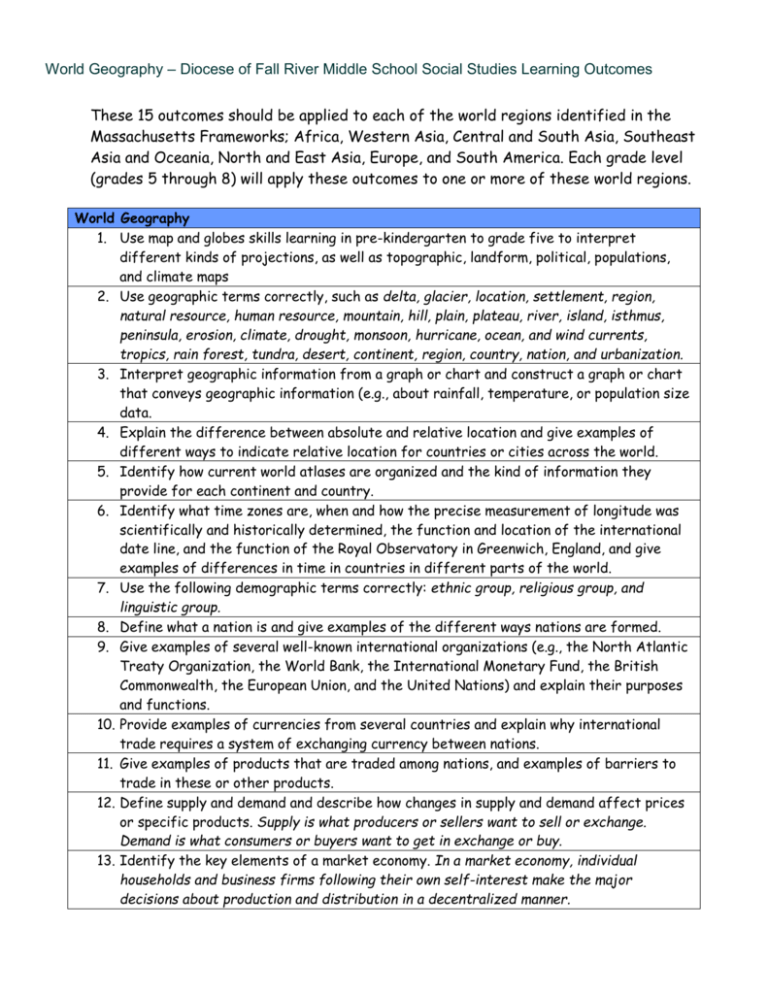
World Geography – Diocese of Fall River Middle School Social Studies Learning Outcomes These 15 outcomes should be applied to each of the world regions identified in the Massachusetts Frameworks; Africa, Western Asia, Central and South Asia, Southeast Asia and Oceania, North and East Asia, Europe, and South America. Each grade level (grades 5 through 8) will apply these outcomes to one or more of these world regions. World Geography 1. Use map and globes skills learning in pre-kindergarten to grade five to interpret different kinds of projections, as well as topographic, landform, political, populations, and climate maps 2. Use geographic terms correctly, such as delta, glacier, location, settlement, region, natural resource, human resource, mountain, hill, plain, plateau, river, island, isthmus, peninsula, erosion, climate, drought, monsoon, hurricane, ocean, and wind currents, tropics, rain forest, tundra, desert, continent, region, country, nation, and urbanization. 3. Interpret geographic information from a graph or chart and construct a graph or chart that conveys geographic information (e.g., about rainfall, temperature, or population size data. 4. Explain the difference between absolute and relative location and give examples of different ways to indicate relative location for countries or cities across the world. 5. Identify how current world atlases are organized and the kind of information they provide for each continent and country. 6. Identify what time zones are, when and how the precise measurement of longitude was scientifically and historically determined, the function and location of the international date line, and the function of the Royal Observatory in Greenwich, England, and give examples of differences in time in countries in different parts of the world. 7. Use the following demographic terms correctly: ethnic group, religious group, and linguistic group. 8. Define what a nation is and give examples of the different ways nations are formed. 9. Give examples of several well-known international organizations (e.g., the North Atlantic Treaty Organization, the World Bank, the International Monetary Fund, the British Commonwealth, the European Union, and the United Nations) and explain their purposes and functions. 10. Provide examples of currencies from several countries and explain why international trade requires a system of exchanging currency between nations. 11. Give examples of products that are traded among nations, and examples of barriers to trade in these or other products. 12. Define supply and demand and describe how changes in supply and demand affect prices or specific products. Supply is what producers or sellers want to sell or exchange. Demand is what consumers or buyers want to get in exchange or buy. 13. Identify the key elements of a market economy. In a market economy, individual households and business firms following their own self-interest make the major decisions about production and distribution in a decentralized manner. World Geography – Diocese of Fall River Middle School Social Studies Learning Outcomes 14. Describe how different economic systems (traditional, command, market, mixed) try to answer the basic economic questions of what to produce, how to produce, and for whom to produce. 15. Compare the standard of living in various countries today using gross domestic product per capita as an indicator.
